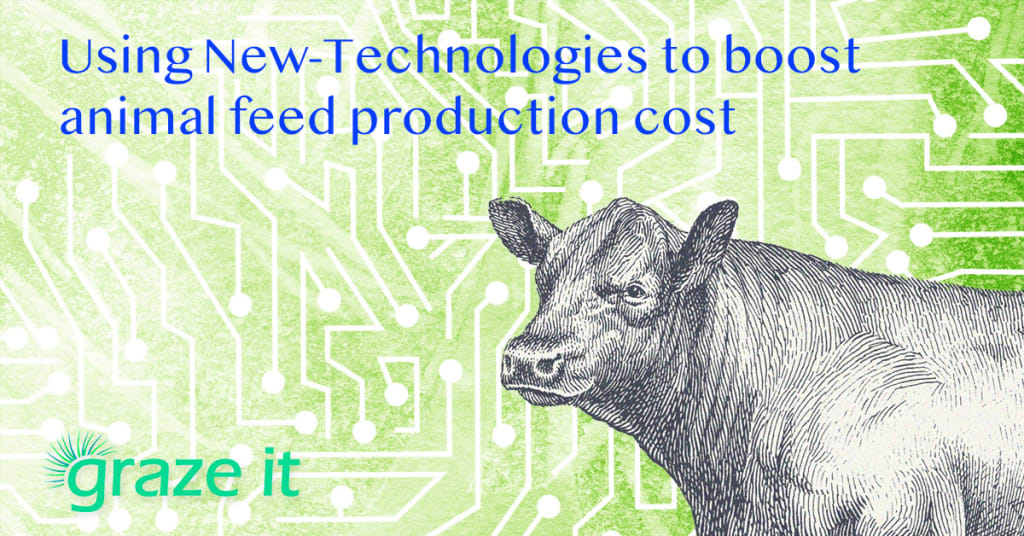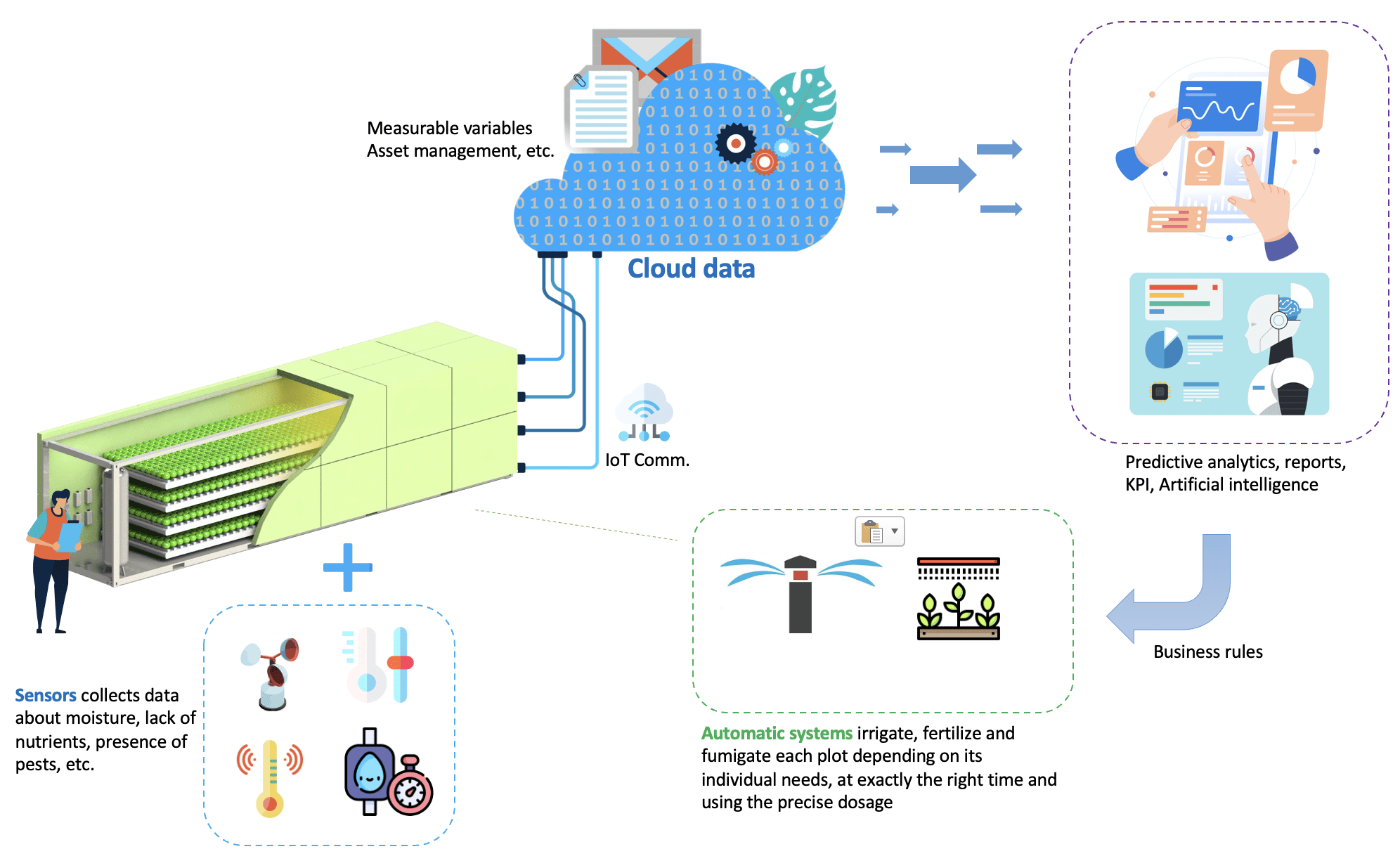
Indoor vertical farms have the potential to revolutionize the way we produce food, including for livestock forage. These farms use technology to grow plants in stacked layers, often using hydroponics to provide the most efficient use of nutrients and water. The types of crops used by Graze-it (ie. barley or wheat) are optimal for livestock feed, as we harvest daily all year long.
One advantage of indoor vertical farming for livestock feed is the ability to customize the nutrition of the crops while increasing the production yield. For example, the farm could focus on producing specific types of crops with high protein, or other nutrients that are important for the health and well-being of the animals. Additionally, our Controlled Environment Agriculture reduces the contamination risk, as they are not exposed to the outdoor diseases and are continuously controlled with our sensors.
Another benefit of indoor vertical farms is their potential to use less water and land compared to traditional farming methods. This is especially critical in areas with scarce or limited land. In addition, indoor vertical farms can be located closer to where the livestock are raised, reducing transportation costs and carbon emissions associated with moving feed long distances.
Overall, indoor CEA have the potential to provide a sustainable and efficient source of feed for livestock, helping to meet the growing demand for animal protein around the world.

How vertical farming and animal livestock will lead a new agri-tech revolution
There are several benefits to using big data, AI, and blockchain in animal vertical farming:
- Crop and livestock monitoring: Machine learning can be used to analyze data from sensors and cameras on farms to monitor crop and livestock health, identify patterns, and optimize growing conditions. For example, machine learning can detect early signs of illness in livestock or optimize crop irrigation and fertilization schedules.
- Improved efficiency: Big data can track and analyze various aspects of animal farming, such as feed consumption, weight gain, and reproductive rates. This can help farmers optimize their operations and reduce costs. AI can be used to automate tasks and make decisions based on data analysis.
- Greater sustainability: By using data and AI to optimize operations, animal vertical farming can be more sustainable by using resources more efficiently and reducing waste.
- Enhanced animal welfare: Big data and AI can be used to monitor animal health and well-being, allowing farmers to identify and address any problems early on. This can help improve the overall welfare of the animals.
- Enhanced traceability: Blockchain can be used to create a transparent and immutable record of an animal’s journey from birth to sale. This can help consumers feel more confident in the quality and safety of the food they are buying.
Overall, the use of technology in indoor vertical farming has the potential to revolutionize the way we grow food. It offers a sustainable, reliable, and year-round solution to feeding an increasingly urbanized population.
About Graze-it
At Graze-it, we are dedicated to revolutionizing the way we grow and produce the “food of our food”. Our innovative platform allows us to cultivate the healthiest nutrient crops year-round in a controlled environment.
Our goal is to provide fresh, pesticide free and locally-grown produce to our clients, while also reducing the environmental impact. We continuously minimize the use of resources such as water, land and even energy (use of renewables).
Graze-it is constantly striving to improve and optimize our processes for a sustainable supply to reduce food security risks.

